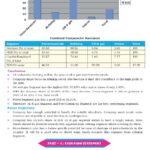
Net pay is the amount of pay an employee receives after all withholding and deductions from gross pay have been made. Gross pay is stated as an annual amount for salaried employees. The annual salary is divided by the number of pay periods in the year to determine gross pay for a pay period. Taxable wage base is the maximum amount of employee compensation subject to Social Security, FUTA, and state unemployment insurance taxes.
Other workers are considered non-exempt and you must pay them overtime. A worker is considered non-exempt and eligible for overtime unless an exemption can be proved by the employer. Search our glossary to get simple definitions of common payroll-related words, phrases, and acronyms. Solve the mysteries of terminology with this informative resource. Updated regularly with industry-specific vocabulary and concepts, the Glossary provides easy-to-understand definitions of tax-related terms. A state-administered program that provides partial wage replacement to employees who are unable to work because of an illness or injury.
Does my Company Have to Pay Out Banked PTO?
The IRS defines an independent contractor as should you pay off your mortgage early just because you can any worker who is self-employed, as opposed to traditionally employed by a company. In terms of payroll, independent contractors are significant in that they do not require money to be withheld for Social Security or Medicare. Compensation that an employer provides to terminated employees, typically those who are discharged through no fault of their own (e.g., layoff). These articles and related content is the property of The Sage Group plc or its contractors or its licensors (“Sage”).
Read on to understand these payroll terms and acronyms so that you are familiar with them. SSN stands for Social Security number, or the code assigned by the Social Security Administration to every American’s social nci interactive stock chart security account. Applicants cannot gain employment without providing this number.
The local taxes an employer is required to withhold from employees’ wages, such as city or county income taxes. Income tax withholding refers to the money an employer keeps, or withholds, from an employee’s paycheck to remit for paying federal or state income taxes. Employees fill out Form W-4 and a state withholding certificate to direct their employers how much to withhold for income tax payments. The employment tax reports an employer must file with the local taxation agency. Applies to employers who must withhold local taxes from employees’ wages and/or pay their own share of local employment taxes.
Streamline your business processes to grow faster and seamlessly. If you’re a business owner scheduling shift work, it’s important you know all the different types of work shifts and how best to schedule your workers. In most circumstances, resident aliens can only be employed by organizations or companies that have sponsored their admission into the United States. Upon the resident alien’s admission, the sponsor is required to sign an affidavit agreeing to support the admitted individual.
Social Security (OASDI)
Pre-tax deductions include health benefits offered under a cafeteria/Section 125 plan. A statement given to employees showing details of their wages received for the pay period, such as hours worked, total wages or salary, overtime, and bonus. Many states have laws dictating the minimum information that must go on a pay stub. Wage garnishment is a legal process that requires employers to withhold a specified amount of money from an employee’s paycheck and remit it to a third party. Garnishment is a tool that courts use to get people to repay debts, whether they’re unpaid child support or credit card bills. The Federal Insurance Contributions Act (FICA) mandates a payroll tax to be imposed on both employees and employers.
Employee self-service (ESS)
If you are a customer with a question about a product please visit our Help Centre where we answer customer queries about our products. When you leave a comment on this article, please note that if approved, it will be publicly available and visible at the bottom of the article on this blog. For more information on how Sage uses and looks after your personal data and the data protection rights you have, please read our Privacy Policy. Compensation is an overarching term that encompasses all the types of payments an employee earns. Most pay stubs also give employees an update on how many vacation and sick days they’ve accrued and used during the year.
- Unemployment programs offer temporary compensation to people who have lost their jobs through no fault of their own.
- The Fair Labor Standards Act (FLSA) requires employers to pay employees regularly.
- Take-home pay is the employee’s wages that remain after all normal deductions and taxes are taken out.
- Gross pay is the total paid to an employee each pay period before any deductions for taxes or other purposes are made.
Once you familiarize yourself with these key payroll phrases, you will feel like an expert next time you run your payroll. An allowance given to employees for travel-related business expenses, such as meals and lodging. A documented contingency plan for managing payroll when disaster or unforeseen emergencies strike. Taxable, non-monetary compensation provided to employees as a fringe benefit.

Many employers choose to allow the employee to earn (or accrue) a certain amount of time per pay period they work. The length of time for which employees are paid, based on their pay frequency. For example, a weekly pay period may start on Sunday and end on debit note vs credit note whats the difference Saturday.
